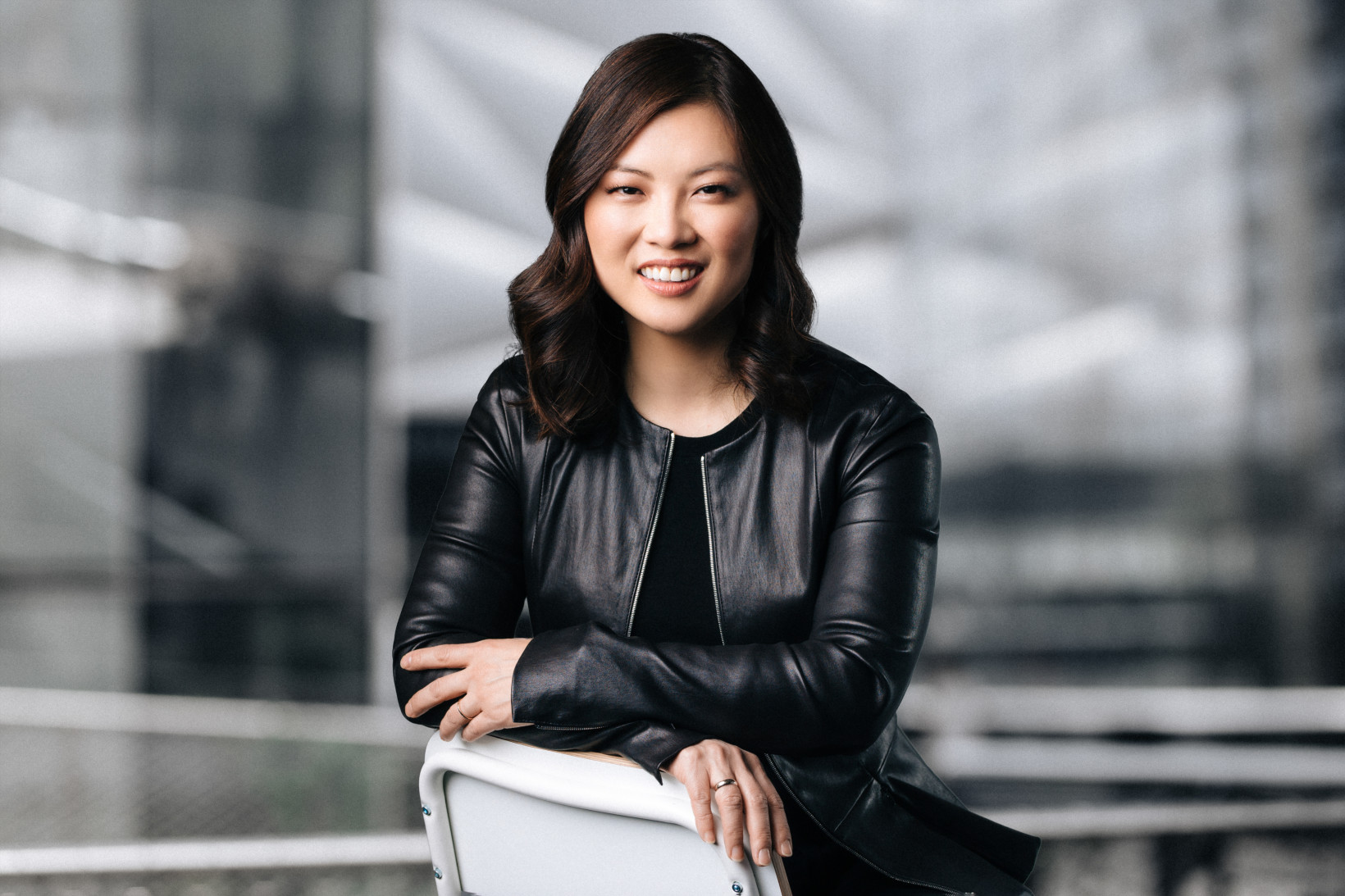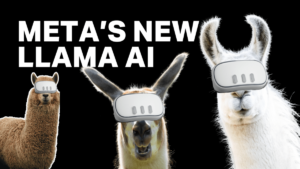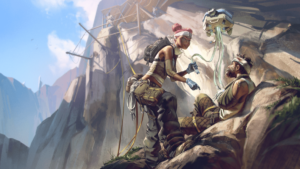
Just a decade ago, the world’s biggest tech beast was a relative minnow. Microsoft had become notorious for disappointing product launches, stagnant innovation, and losing top talent. The first true software giant was becoming a big tech dinosaur.
Fast forward to 2024 and Microsoft is the planet’s most valuable business. Under the leadership of CEO Satya Nadella, stock has soared by over 1,000% in 10 years. In January, the company reached a $3 trillion market cap — larger than the whole GDP of France.
At the heart of the comeback is artificial intelligence. Microsoft has embedded AI across the Azure cloud computing platform, the Office productivity suite, and the Bing search engine. After missing out on the mobile and social media booms, the Redmond giant has become a global leader in AI.
A key player in the turnaround was Sophia Velastegui — one of the star speakers at TNW Conference this June. Velastegui joined Microsoft in 2017 as a general manager of AI Products and Search. Six months later, Business Insider named her one of the most powerful female engineers in tech.
Back then, Nadella’s plans were just starting to take shape.
“Microsoft was not an AI company — it was a software company. But if you talk about Microsoft now, many people will say it’s an AI company,” Velastegui, now Chief Product Officer of automotive giant Aptiv, tells TNW.
“How did they do that? What are the things they did? They invested in and infused AI into their features and their products —whether it be for software development or Office.”
Velastegui played a growing role in that infusion. After a promotion to Chief AI Officer in Business Applications, she became part of the core team exploring Microsoft’s vaunted new investment: OpenAI.
An intergenerational relationship
Microsoft has a long history in AI. The company’s research unit had explored the field since Bill Gates launched the centre in 1991 — but the experiments hadn’t spawned popular products. From the reviled Clippy to the jilted Cortana, Microsoft’s AI apps rarely charmed consumers.
Nadella immediately sought to change that. His first big move after he was appointed CEO in 2014 was a sweeping embrace of chatbots. The shift wasn’t an immediate triumph: an early bot called Tay became a Hitler-loving sex pest.
Despite the controversy, the plans rolled on.
“As an industry, we are on the cusp of a new frontier that pairs the power of natural human language with advanced machine intelligence,” Nadella said after Tay’s meltdown.
As a company, Microsoft looked beyond its walls for that frontier. The search led the company to OpenAI.


Launched in 2015, OpenAI had a bold mission to build artificial intelligence that would “benefit humanity as a whole.” But its ambitions were consuming vast resources.
In 2017, the buzzy startup spent an estimated $7.9 million on cloud computing — a quarter of its functional expenses. That brought the young contender into a collaboration with an ageing tech behemoth: Microsoft.
The software giant announced a partnership with OpenAI the next year. Under the terms of the deal, OpenAI would use Microsoft’s Azure cloud platform for research and development.
By 2019, Microsoft had become the AI lab’s “exclusive” cloud computing provider. Following a fresh $1bn investment in the startup, the Redmond giant became OpenAI’s preferred partner for commercialisation.
Commercialising OpenAI
Microsoft soon integrated OpenAI large language models (LLMs) into Azure cloud services. Customers use the software for various app features, from chatbots and content generation to translators and personalised marketing.
The service grew rapidly. In the second quarter of this year, Microsoft reported a 50% increase in users of Azure OpenAI over the previous 12 months. Over 53,000 customers now used the service, Nadella said, including “over half” of the Fortune 500.
The Azure plans reflected wider moves at Microsoft. According to Velastegui, the company’s AI strategy was laser-focused on delivering powerful products. A recent McKinsey report found that this approach was common among successful AI adopters.
“They’re not just focusing on efficiency and operation, they’re creating new products and new capabilities that they’re selling as part of their business or providing as a service,” Velastegui says.


Azure is now the world’s fastest-growing cloud computing platform — and dramatically narrowing the gap to long-term leader Amazon Web Services. OpenAI has played a key role in the revival.
According to Raimo Lenschow, a stock analyst at Barclays, the GPT giant gives Microsoft a “massive, competitive advantage over Google and Amazon.”
“Historically, if you’re a cool startup that was doing something amazing, Microsoft wasn’t really your first choice,” Lenschow told the Associated Press in February. “So the fact that [Nadella] got OpenAI to commit to Azure was an amazing masterstroke.”
Azure was just the first of the pair’s collaborations. OpenAI’s models were rapidly spreading across Microsoft’s product portfolio.
Microsoft enters the LLM era
OpenAI had a breakthrough moment in 2020. That June, the startup unveiled a powerful new LLM that sparked the flame for today’s AI explosion: GPT-3. The architecture laid the foundations for ChatGPT.
The New York Times called GPT-3’s ability to produce prose, poetry, and code “amazing”, “spooky”, “humbling”, and “more than a little terrifying.” Wired said the model was “provoking chills across Silicon Valley.”
Microsoft was clearly impressed. In September, the software giant inked a new deal with OpenAI that provided an exclusive licence to GPT-3.
Velastegui led Microsoft’s exploration of the model’s potential use cases, from search and business applications to low-code development platforms.
The applications quickly expanded across the company’s products. When the World Economic Forum rolled into Davos last year, Nadella said Microsoft planned to put “tools like ChatGPT into all of its products.” But the integration needed firm guardrails.
“ChatGPT is interesting, but it doesn’t do sources… It goes into this black box and you don’t understand why it’s behaving the way it is,” Velastgui says.
To provide what she calls “trusted information,” Microsoft added references to LLM outputs. The annotations link to the information’s sources.
AI risks and rewards


Further safeguards sought to reduce the risks of harmful outputs. Safety filters, abuse monitoring, hallucination detection., and simulating adversarial attacks have strengthened the defences.
“The reason why Microsoft didn’t just leverage ChatGPT as it is,” Velastegui says, “is that ChatGPT is trained on all of the internet — the good, the bad, the ugly, and the very ugly.”
Not all the restrictions were successful, however. A Microsoft engineer warned a design tool powered by OpenAI was generating violent and sexual images. The outputs also featured “political bias, underaged drinking and drug use, misuse of corporate trademarks and copyrights, conspiracy theories, and religion to name a few,” the engineer told the FTC.
Tools harnessing ChatGPT have also produced disturbing outputs. Microsoft said the behaviour was limited to a small number of prompts used to bypass safety measures. The company also pledged to investigate the concerns. In the meantime, the AI roll-outs are continuing.
Embedding OpenAI into Microsoft
Microsoft has baked OpenAI into a diverse array of apps. One is Copilot, a coding tool that conducts a growing proportion of programming tasks.
Another is the revamped Bing search engine. Microsoft unveiled the AI-powered update in February 2023 — a month after announcing a fresh investment in OpenAI, reportedly worth a whopping $10bn.
Nadella heralded Bing’s rebirth as a “new day in search.” By adding OpenAI’s models to the system, Microsoft hoped to create a conversational rival to Google’s market conqueror.
That remains a distant goal, but the early results showed promise. Within six weeks of the launch, page visits on Bing had risen 15.8% while Google’s had declined by 1%, according to analytics firm Similarweb.
OpenAI has also entered the Microsoft 365 Office apps. Word, Excel, PowerPoint, and Outlook now include an AI assistant called Copilot, which generates new content and analysis in response to prompts.
The move highlighted Microsoft’s competitive advantage. “Can Google work with OpenAI instantly… and bring it to their products? The answer is no,” Velastegui says.
Microsoft’s rivals, she adds, can still integrate OpenAI’s off-the-shelf products. But that blunts the software’s edge.
“That means your competitor can do the same,” Velastegui adds. “If it’s easy for you, it’s also easy for them.”
Microsoft’s exclusive access soon paid off. By the end of 2023, shares in the company had surged by 57% year-on-year. Analysts credited the rally to Microsoft’s lead in generative AI.
The future relationship
Not every OpenAI addition has been a hit. Early customers of Copilot have decried the service’s costs. Users of other Microsoft products, meanwhile, have grown frustrated with the coding tool’s relentless spread.
In the future, the tie with OpenAI could loosen. Microsoft is also integrating services from rival companies, such as Paris-based Mistral AI, which last month attracted a €15mn cash injection from the Windows maker.
Alongside the external addition, Microsoft is investing in homegrown foundation models. The company ultimately plans for Azure to become a “model garden.”
In the evolving world of AI, Microsoft’s future relationship with OpenAI is uncertain. But the marriage thus far has been extremely successful. It also offers useful lessons on AI strategies. Velastagui singles out one for special attention.
“Don’t solve these micro problems, issues, or goals,” she says. “Solve the one that will make a difference in the business.”
One of the themes of this year’s TNW Conference is Ren-AI-ssance: The AI-Powered Rebirth. If you want to go deeper into all things artificial intelligence, or simply experience the event (and say hi to our editorial team), we’ve got something special for our loyal readers. Use the code TNWXMEDIA at checkout to get 30% off your business pass, investor pass or startup packages (Bootstrap & Scaleup).






